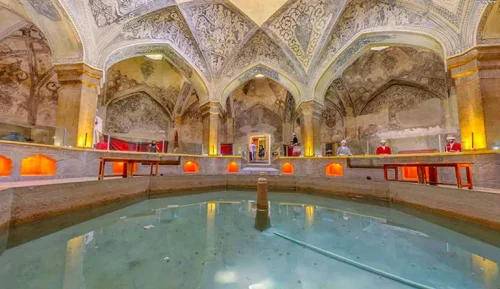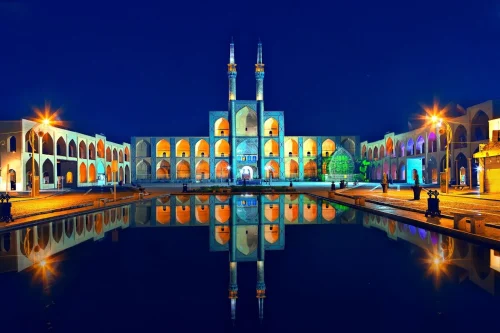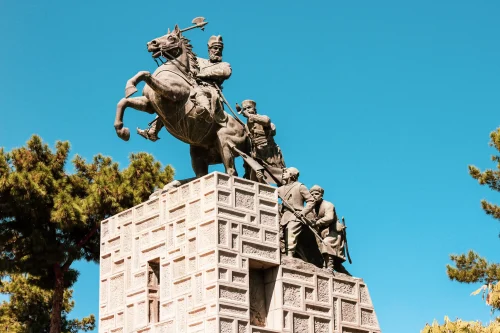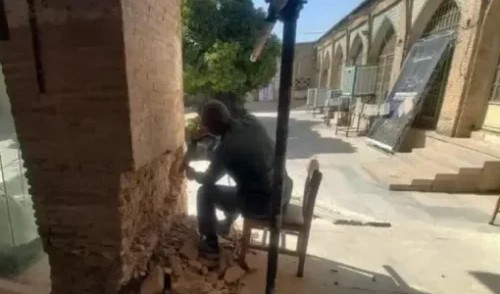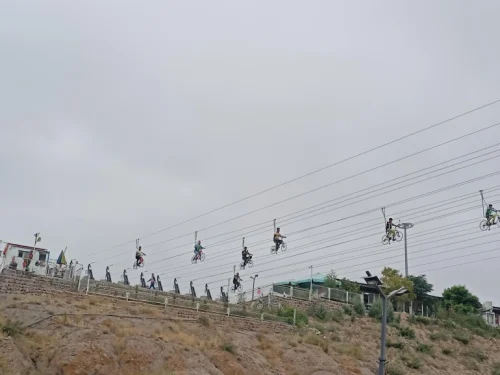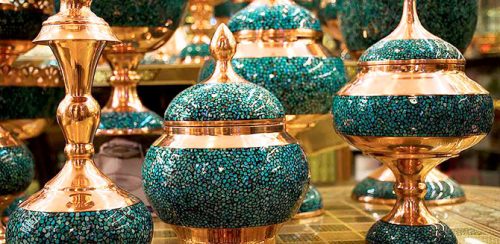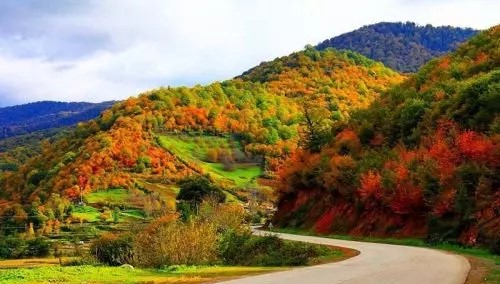Tracing the Ever-Evolving Legacy of Handicrafts Through the Ages
In an era marked by rapid technological advancements and constant cultural shifts, the art of handicrafts continues to captivate hearts and minds across the globe. Rooted in centuries of tradition, intricate techniques and the creative spirit of countless artisans, the story of handmade crafts stands as a living testament to the enduring capacity for creativity and innovation. Throughout history, communities have passed down methods and styles from one generation to the next, preserving unique artistic voices while allowing for the infusion of modern influences. Today, as we embark on an exploration of Tracing the Ever-Evolving Legacy of Handicrafts Through the Ages, we delve deep into the evolution of these treasures that represent not merely objects of beauty, but also the cultural, economic, and spiritual fibers of countless societies. The narrative of handicrafts is interwoven with the lives of those who have dedicated themselves to mastering their craft, celebrating traditions that mirror historical values and societal shifts, and embracing the transformative power of innovation. These remarkable creations emerge from humble beginnings—often in small, family-run workshops or community centers—and grow into symbols of cultural pride and identity, inspiring both artists and collectors worldwide. As we reflect on the journey of handicrafts, we recognize that every carved pattern, every stitched design, and every hand-painted motif is imbued with stories of resilience, perseverance, and the unwavering human desire to create something meaningful.
creativity dynamism-Iran Charter
The legacy of handicrafts, when seen through the lens of Tracing the Ever-Evolving Legacy of Handicrafts Through the Ages, is not a static relic of the past but a dynamic continuum that constantly adapts to the changing needs and tastes of modern society. Within this vast panorama, ancient techniques coexist with contemporary expressions to produce works that are both timeless and innovative. The fusion of age-old practices with modern methodologies has given rise to a new generation of artisans who are revitalizing traditional art forms while reinterpreting them for today’s aesthetic sensibilities. This synthesis of the old and the new creates a rich tapestry of design and craftsmanship that resonates with diverse audiences, inviting dialogue and reflection on cultural identity and heritage preservation. In many ways, handicrafts serve as bridges between eras, offering tangible connections to civilizations long past while simultaneously inspiring future trends in design and decoration. The meticulous attention to detail and the passion that underpins every handcrafted piece reveal insights about the values and lifestyles of their creators, offering observers an intimate glimpse into traditions that might otherwise fade in the shadow of industrial mass production. As such, the movement to preserve and celebrate handicrafts has grown into a cultural renaissance—one that champions sustainability, fosters creative expression, and nurtures community bonds through the shared act of creation.
creativity dynamism-Iran Charter
Exploring further the myriad dimensions of Tracing the Ever-Evolving Legacy of Handicrafts Through the Ages, one encounters a narrative rich with symbolism and significance. Handicrafts have long served as emblems of cultural continuity, representing the collective memory of people who have, over centuries, transformed raw materials into objects of art that tell stories of land, identity, and tradition. Each handcrafted work offers a unique combination of techniques that have been refined and perfected through years of practice, often drawing on local resources and indigenous knowledge systems. The process of creation itself—marked by an interplay of intuition, skill, and passion—reveals the diverse influences that shape an artisan’s work, whether it is the impact of geographical surroundings, the legacy of ancestral customs, or the empowerment derived from reimagining artistic conventions. In many communities, the act of crafting becomes a communal event, one in which knowledge is shared and cultural narratives are reinforced with every stitch, carve, or brushstroke. As artisans navigate the delicate balance between preserving traditions and embracing innovative forms, they contribute to a legacy that continues to evolve, ensuring that handicrafts remain relevant in an ever-changing world. This ongoing dialogue between heritage and modernity highlights the important role that handicrafts play—not only as decorative objects or items of commerce—but as living representations of a culture’s soul. For many, the practice of traditional crafting rekindles a deep sense of belonging and pride, reinforcing connections to a storied past while inviting conversations about the future of art in a globalized society.
creativity dynamism-Iran Charter
Over the course of centuries, the journey of handicrafts has seen both moments of flourishing creativity and periods of quiet endurance amid social and economic challenges. Tracing the Ever-Evolving Legacy of Handicrafts Through the Ages illuminates not only the artistic evolution of these treasured practices but also their capacity to foster resilience in communities facing rapid shifts in cultural and market dynamics. The reinvention of traditional forms in response to contemporary demands has led to innovative collaborations and a renewed appreciation for artisanal methods over mass production. Artisans and cultural advocates work tirelessly to document and share these practices, championing initiatives that ensure traditional skills are neither lost to time nor overshadowed by mechanized production. In doing so, they nurture a vibrant creative ecosystem where the old ways are not discarded but rather integrated into modern life, offering sustainable solutions to current economic and social challenges while enriching our global artistic heritage. As people from different walks of life rediscover the enduring charm of handmade art, there emerges a growing recognition of its multifaceted benefits—not simply as aesthetic commodities, but as indispensable narratives of cultural history, local tradition, and human ingenuity. This movement represents a collective effort to safeguard a legacy that embodies the spirit of creativity, perseverance, and shared identity, transmitting lessons about tradition and innovation to future generations in an ever-unfolding cultural dialogue.
In conclusion, the multifaceted saga of handicrafts, encapsulated in the theme of Tracing the Ever-Evolving Legacy of Handicrafts Through the Ages, stands as a powerful reminder of human creativity in its most authentic form. This legacy continues to inspire and resonate across diverse communities worldwide, offering a glimpse into a world where tradition meets modernity, and where every handcrafted object is imbued with layers of meaning and history. The seamless integration of time-honored techniques with contemporary practices not only preserves invaluable cultural heritage but also sets the stage for ongoing innovation in the world of art and design. As we witness this dynamic evolution, the narrative of handicrafts reveals that true creativity is timeless—it is continuously reinvented, reinterpreted, and reborn in each new generation. The ongoing journey of these art forms is a celebration of human endeavor, reflecting the capacity of communities to adapt, transform, and thrive through change. In cherishing these artisanal legacies, we honor a tradition that transcends borders and eras, uniting people through the shared language of craftsmanship and beauty. Ultimately, the story of handicrafts—and our commitment to preserving it—serves as an enduring symbol of our collective resolve to nurture culture, empower creativity, and embrace the vibrant interplay between past achievements and future possibilities.
The Dynamic History of Handicrafts in Iran – Tracing the Ever-Evolving Legacy of Handicrafts Through the Ages
Handicrafts have played a crucial role in the evolution of art and culture in Iran from ancient times to the present day. Over centuries, these traditional arts have interwoven authentic elements with innovative techniques to create a dynamic atmosphere of creativity and uniqueness. The narrative of handicrafts is a tale passed down from generation to generation, acting as a bridge between the rich heritage of the past and the promise of the future. Every crafted piece reflects the enduring efforts of communities to preserve cultural heritage while also adapting to modern needs.
In this ongoing journey, the use of indigenous materials and time-honored craftsmanship, combined with contemporary design innovations, has elevated handicrafts into a symbol of national identity and artistic excellence. This intersection of tradition and modernity serves as a testament to the transformative power of cultural resilience and creative innovation.
Cultural and Spiritual Values of Handicrafts – Tracing the Ever-Evolving Legacy of Handicrafts Through the Ages
Every handcrafted work carries with it stories from bygone eras and embodies the cultural and spiritual values that have been cherished by generations. Beyond their visual appeal, these art pieces communicate deep cultural narratives and spiritual messages that reflect the beliefs and traditions of a community. They serve as visual storytellers that recall historical events, myths, and long-held customs, reinforcing a sense of unity and collective pride.
In today’s fast-changing global landscape, the cultural and spiritual dimensions of handicrafts offer a unique avenue to express life’s enduring values. They create a dialogue between tradition and the contemporary world, ensuring that these timeless messages continue to inspire and connect people.
Innovation and Development in Handicraft Production Methods – Tracing the Ever-Evolving Legacy of Handicrafts Through the Ages
Over time, production methods in the world of handicrafts have evolved significantly. Traditional techniques have been enriched by the integration of modern innovations, allowing artisans to produce works that honor heritage while embracing new creative approaches. This evolution has resulted in products that maintain their authentic charm yet exhibit modern flair, meeting contemporary aesthetic standards.
Such a blend of old and new not only drives economic growth by opening up fresh market opportunities but also ensures that handicrafts remain relevant in today’s competitive creative environment. The practice of merging conventional skills with today’s technological advancements is paving the way for sustainable development in the artisan field.
International Festivals and Exhibitions Showcasing Handicrafts – Tracing the Ever-Evolving Legacy of Handicrafts Through the Ages
International festivals and exhibitions stand as vibrant platforms for celebrating and promoting the art of handicrafts. These events gather artists, cultural advocates, and exhibition organizers, all dedicated to showcasing the unique craft traditions that have been refined over centuries. Such gatherings not only highlight the aesthetic and technical brilliance of these works but also create opportunities for cross-cultural dialogue and artistic exchange.
By presenting a diverse array of ornaments, textiles, and decorative arts on a global stage, these festivals reaffirm the role of handicrafts as powerful cultural ambassadors. They foster a deeper appreciation for the creative legacy embedded in each piece, connecting communities worldwide with the timeless spirit of artistic endeavor.
Economic Impact and Job Creation through Handicrafts – Tracing the Ever-Evolving Legacy of Handicrafts Through the Ages
Handicrafts have long been recognized as a significant contributor to sustainable economic development and job creation in local communities. The art of handcrafted production is not only a cultural heritage but also a robust engine for generating employment and promoting local industry. The integration of traditional craftsmanship with modern design elements enriches the market and fosters a thriving ecosystem for small businesses and individual artisans alike.
This economic dimension contributes to regional development by supporting artisanal workshops and creating sustainable livelihoods. The continued growth and innovation within this sector strengthen local economies, making handicrafts a vital component of cultural and economic identity.
Modern Technologies in Handicraft Production – Tracing the Ever-Evolving Legacy of Handicrafts Through the Ages
The adoption of modern technologies in handicraft production has revolutionized the field while maintaining a strong link to tradition. Digital design tools, advanced production techniques, and innovative manufacturing processes now work alongside age-old methods to produce works of art that are both intricate and contemporary in appearance. This synergy has raised the quality and diversity of handicraft outputs considerably.
Modern techniques not only help in reducing production costs and errors, but they also open up new creative possibilities for artisans. By harmonizing cutting-edge technology with traditional skills, the handicraft industry continues to evolve, attracting a younger generation and ensuring its enduring legacy.
Art and Creativity at the Heart of Handicraft Culture – Tracing the Ever-Evolving Legacy of Handicrafts Through the Ages
At its core, the world of handicrafts is driven by art and creativity. Each handmade piece is a profound expression of the individual creativity of its maker, combining historical influences with innovative design. This delicate balance between preserving ancient techniques and introducing new interpretations is what makes each artifact a unique narrative of artistic evolution.
The creative process behind each craft amplifies not just visual beauty, but also conveys personal expressions and collective experiences. These works serve as a testament to a culture where art is interwoven with daily life, inspiring admiration and reflection among diverse audiences.
Promoting Social Cohesion and Family-Centric Handicraft Traditions – Tracing the Ever-Evolving Legacy of Handicrafts Through the Ages
Handicrafts have always played a pivotal role in strengthening social bonds and fostering a family-centric cultural environment. In many communities, each crafted item is considered a family treasure, symbolizing shared heritage and national pride. The collaborative nature of crafting often involves multiple family members, providing an avenue for intergenerational exchange of skills and traditions.
This communal spirit not only nurtures creativity but also reinforces a sense of belonging and collective identity. By passing down artisanal techniques within families, communities ensure that the legacy of handicrafts continues to thrive, connecting the past with the future in a warm, inclusive manner.
Challenges and Future Directions in the Handicraft Sector – Tracing the Ever-Evolving Legacy of Handicrafts Through the Ages
Despite its rich heritage and economic contributions, the handicraft sector faces several challenges including marketing hurdles, limited access to modern investment, and the pressing need to update traditional techniques. Artisans and cultural advocates are actively exploring new strategies, such as embracing digital technologies and fostering international collaborations, to overcome these obstacles.
By analyzing global market trends and investing in educational initiatives, the industry is addressing these challenges head-on. This proactive approach ensures that traditional handicrafts not only survive in a modern economy but also flourish, continuously contributing to cultural richness and artistic innovation for future generations.
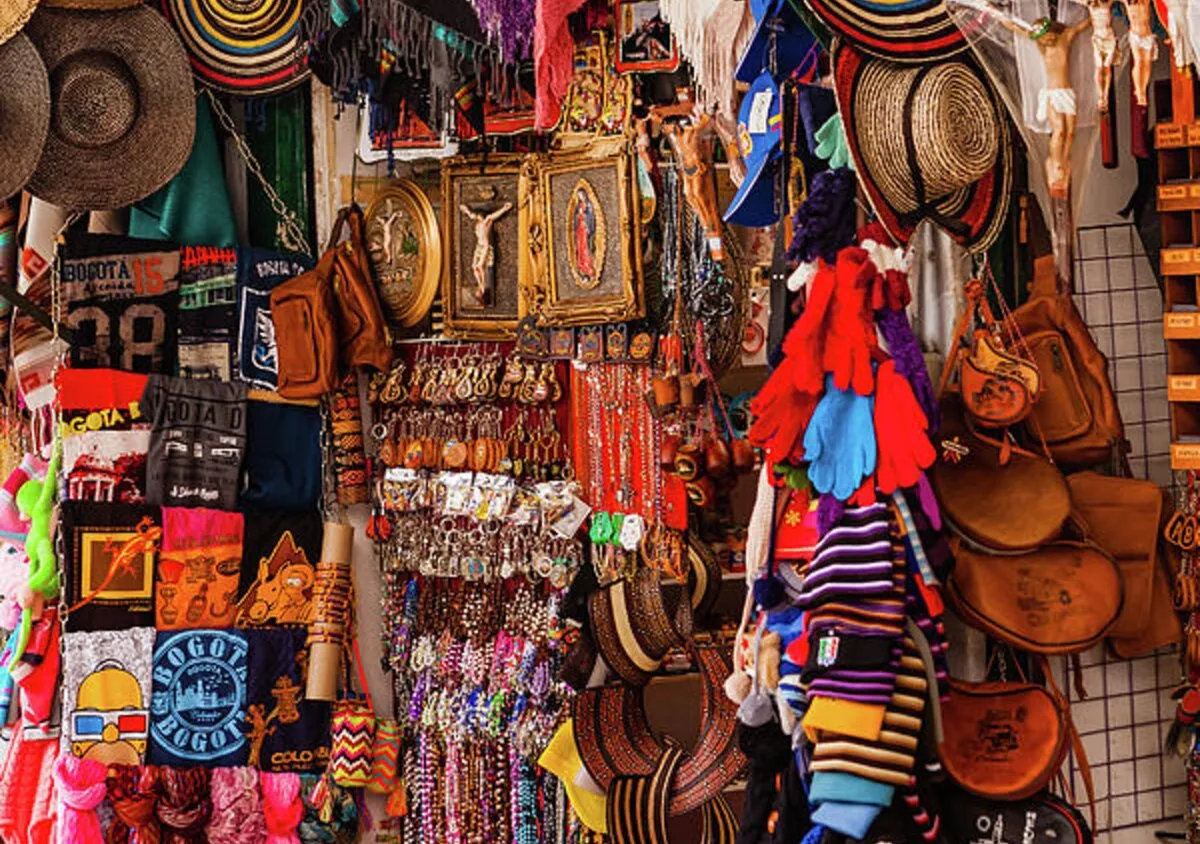
Frequently Asked Questions
- What historical developments have handicrafts undergone?
- The history of handicrafts has been marked by many challenges and constant evolution, reflecting growth over the years.
- What role does culture play in the development of handicrafts?
- Diverse cultures and ethnic backgrounds not only preserve handicrafts as heritage but also foster social cohesion.
- What is the significance of handicraft festivals?
- Handicraft festivals provide a platform for exchanging ideas and showcasing innovations, which in turn spur regional economic growth.
- How can handicrafts serve as a solution for employment?
- Emphasizing their cultural and economic value, creating job opportunities around handicrafts helps reduce unemployment and boosts an identity-based economy.
- What is the role of family support in handicrafts?
- Handicrafts are often family-oriented, and mutual support aids in transferring traditional skills and preserving their authenticity.
- How can handicrafts contribute to crime prevention?
- By offering employment opportunities and stimulating creativity among youth, handicrafts can play a significant role in reducing crime.
- What impact does collaboration have on the growth of handicrafts?
- Collaboration between individuals and institutions nurtures innovation and creates a dynamic environment that drives the advancement of handicrafts.
- What role do artists play in the transmission of culture and art?
- Artists combine tradition with creativity to pass on handicraft skills to future generations, thereby preserving cultural heritage.
- What opportunities exist for handicrafts during festive seasons like New Year and Ramadan?
- Festive seasons offer economic vibrancy, opening up avenues for artists to showcase diverse products and capitalize on seasonal demand.
- How are handicrafts connected with tourism?
- Integrating local handicrafts with tourism attracts visitors to indigenous cultures while boosting revenue for local communities.
- How does cultural exchange happen at handicraft festivals?
- Festivals provide an ideal setting for experiencing a variety of arts from different regions, enhancing the exchange of knowledge and experiences among artists.
- What strategies are recommended for the development of handicrafts?
- Close cooperation among cultural, educational, and regulatory institutions paves the way for innovation and adoption of new technologies in handicraft production.
- How does education contribute to the transmission of handicraft skills?
- Specialized training programs and hands-on workshops are vital for transferring traditional skills and ensuring the survival of handicraft techniques for future generations.
- How does Iran Charter support handicrafts?
- Iran Charter promotes local arts by providing a dedicated platform that showcases and leverages handicraft products, thus supporting this valuable heritage.
- What measures have been implemented to enhance an identity-based economy?
- Encouraging the use of handicrafts and creating opportunities that harness local talents has significantly contributed to strengthening an economy based on cultural identity.
- What challenges are faced in the growth of handicrafts?
- Challenges include sourcing raw materials, insufficient marketing strategies, and the need for effective training; however, collaborative efforts can help overcome these obstacles.


